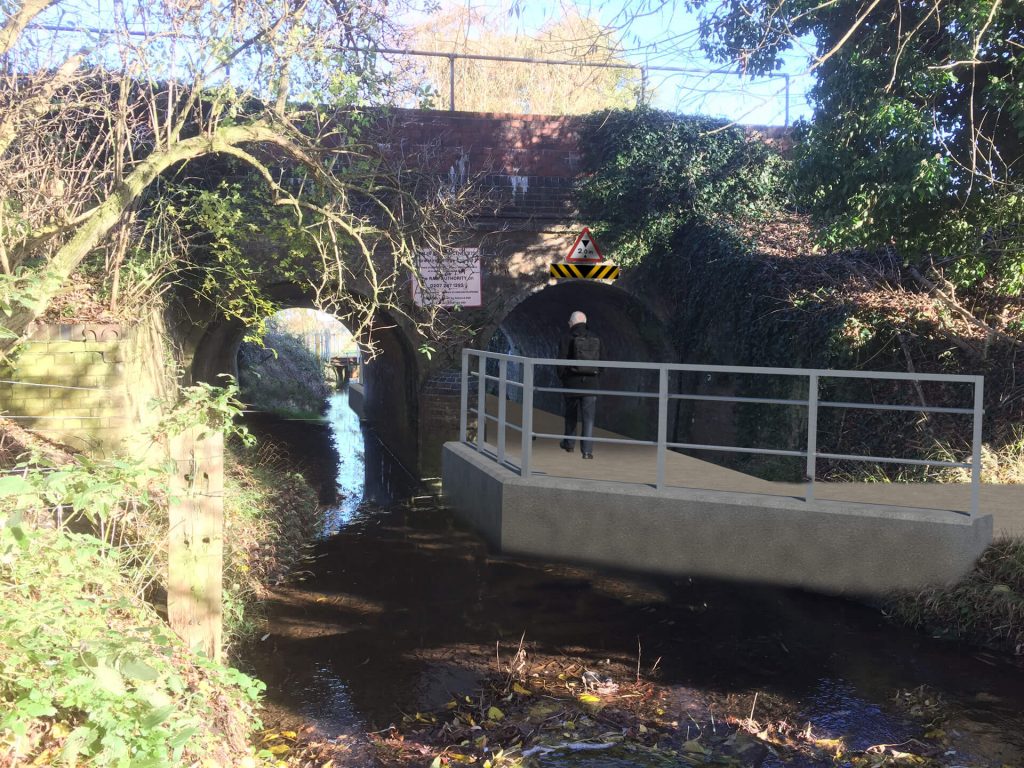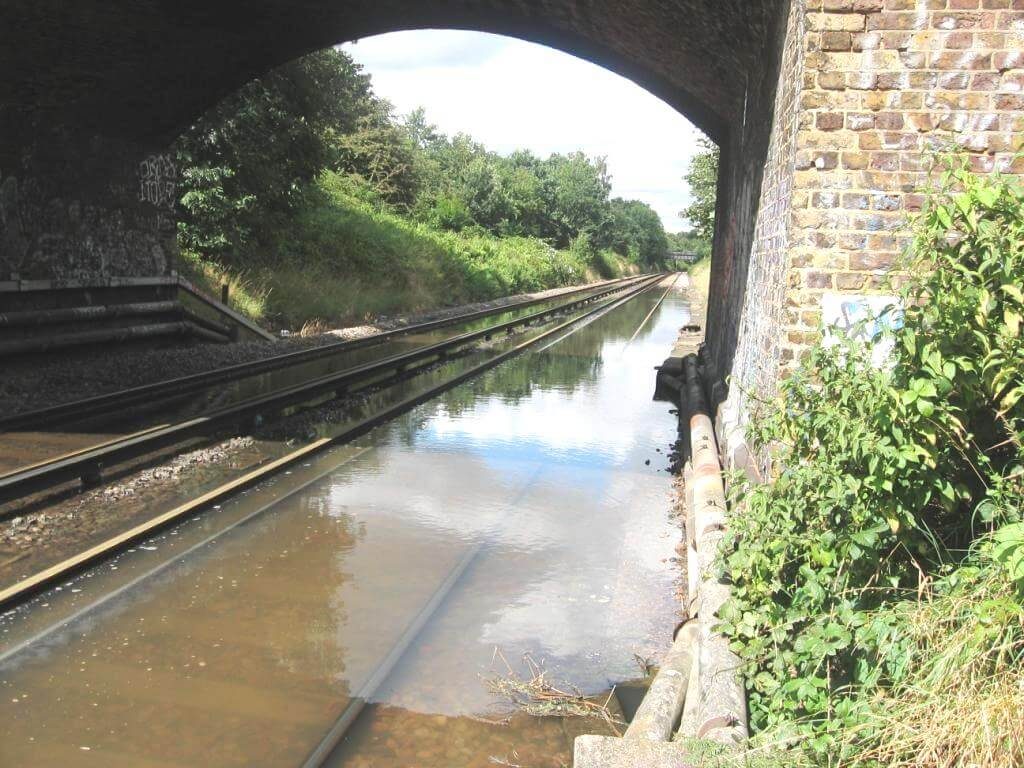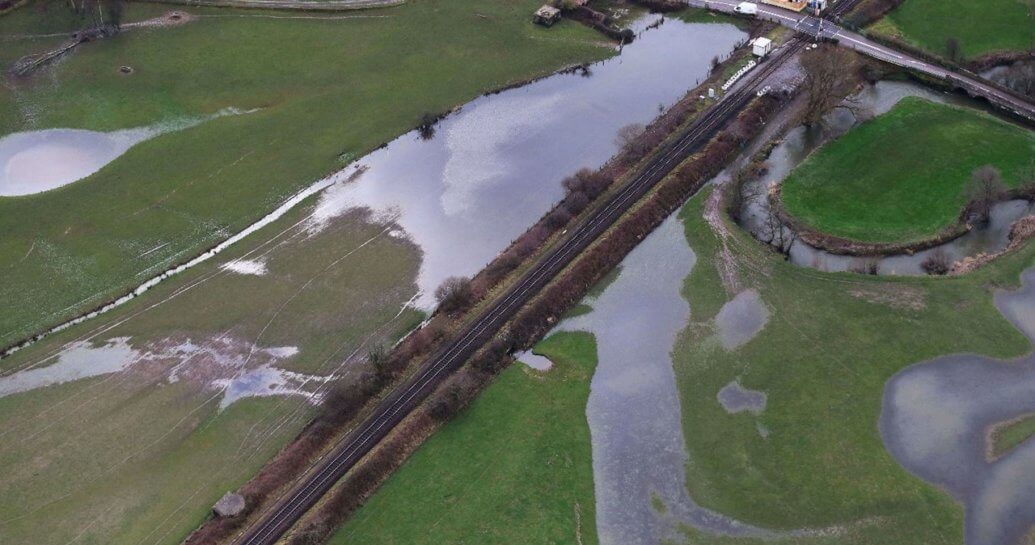In September we’ll start work on a £9 million flood defence scheme on our Wessex route to better protect the railway line.
We’ll reduce the likelihood of local flooding from a one in five-year risk, to a one in 20-year risk by installing two 550-tonne underground culverts – tunnels carrying drains – at Axe Valley in Devon.
In July, we completed culvert installation work near Exeter as part of £26.5m flood alleviation scheme for the south west.

Flooding in the Cowley area had been a longstanding problem that had had a devastating impact on this part of the Great Western Mainline, resulting in numerous delays and closures.
The Cowley culverts project was one of the schemes under the Department for Transport’s £26.5m Flood Resilience Programme. It was established after extreme weather in 2012 and 2014 caused extensive disruption to the rail network. Its aim is to reduce the risk of flooding at key locations in the Thames Valley and south west and ensure that when flooding does occur, train services can be resumed at a quicker rate, reducing disruption for passengers.
A culvert (pictured) is just one example of how we deal with flooding on the railway…
There are lots of reasons why the railway is prone to flooding
Many sections of the railway were built in cuttings and tunnels that are lower than the surrounding area. Other lines sit on flat, low-lying land with limited drainage that can be overwhelmed by heavy rain. For these reasons, many of our lines can flood, and this can cause serious problems for the railway.

That’s why we’re always looking for ways to prevent floods happening in future.
Building on land near the railway can also increase flooding because rain that previously would have soaked into the ground can run off the new hard ground and onto the tracks. To help prevent this, we review planning applications for developments near railway lines to make sure the drainage systems proposed are adequate.
How flooding affects the railway
When the railway does flood, our engineers and contractors who work on the railway carry out repairs so trains can safely run again as soon as possible. There are lots of different things they have to check and repair.
When flood water rises above the rails, trains must slow down to prevent damage to the train. Flooding can cause a short circuit and cut the power if the track has a live conductor rail.
It’s not just during a flood that journeys can be disrupted but afterwards as well.
Trackside points and signalling equipment that rely on intricate wiring and power supplies can easily fail during flooding and need to be replaced before trains can run on the track again.
When flood water drains away, it can wash away the ‘ballast’ – the bed of stones that supports the sleepers – and this destabilises the track. To make the line safe again, this ballast must be relaid.
How we reduce the effects of flooding and prevent delays
• We continually monitor the weather – as soon as we receive a flood warning from the Environment Agency and Flood Forecasting Centre, we send people and equipment to at-risk areas so we’re in position to act quickly.
• We deploy flood defence systems, including barriers with a membrane that seals to prevent water getting through, and inflatable barriers filled with water.
• Branches, leaves and debris in ditches and drainage systems prevent water runoff – so we clear these out both on and near the track
• Thanks to our ongoing project to build pumping stations in flood-prone locations, we have the resources in place to enable us to quickly pump flood water away when needed.
• As lines are renewed in flood prone areas, we install the tracks and signalling equipment at a higher level so it’s less likely they’ll be flooded.
Find out about the machines we’re using to help prevent flooding on the railway




